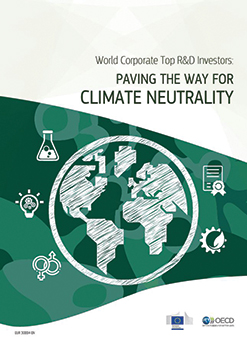The changing landscape of innovation, the globalisation of markets and the fragmentation of production value chains, as well as the emergence of new players are changing the way market actors use IP rights and policy-makers understand rights and their role. The context in which IP currently operates is very different from the one in which IP rights were conceived. IP systems are undergoing continuous changes as they seek to optimise the balance between private and social benefits to contribute to economic growth and the welfare of societies.
Intellectual property statistics
Intellectual property (IP) rights aim to stimulate innovation by enabling inventors to appropriate the returns on their investments. OECD gathers a range of IP data to assist policy- and decisionmakers.
About
Data
Patent-related indicators are available on the OECD Data Explorer.
The OECD gathers records on IP rights documents from several administrative sources encompassing patents, trademarks and design rights. While patent data mainly rely on the Worldwide Statistical Patent Database (PATSTAT) maintained by the EPO, trademarks and design registrations are gathered from different IP offices (IP Australia, JPO, OHIM, USPTO).
Several patent-related dataset are made available to researchers upon request (from a secure password-protected server). The datasets can be used as a complement to other existing patent data sets (e.g. PATSTAT).
- OECD Patent Quality Indicators Database (series of indicators capturing the technological and economic value of EPO and USPTO patents)
- OECD Triadic Patent Families Database (set of patents jointly filed at EPO, JPO and USPTO)
- OECD REGPAT Database (EPO and PCT patents by regions)
- OECD Citations Database (references to patent and non-patent literature cited in EPO, USPTO or PCT patents)
- OECD HAN database (harmonised patent applicants’ names)
The Intellectual Property (IP) bundle of top corporate R&D investors (EC-JRC-OECD COR&DIP©) database is the result of a collaboration between the European Commission, Joint Research Centre Directorate B (Fair & Sustainable Economy) and the OECD STI Directorate. For the top 2000 corporate R&D performers worldwide, the COR&DIP© database links the Research & Development (R&D) activity with IP assets (patents and trademarks). It relies on EU Industrial R&D Investment Scoreboard data produced by the EC-JRC, covering the top 2000 corporate R&D investors worldwide, and on the IP database of the OECD STI Micro-data Lab infrastructure. To ensure transparency and foster further use, the latest version of the COR&DIP© database (v.4) and all previous versions, are publicly available.
World corporate top R&D investors: Paving the way for climate neutrality
This report sheds light on the innovative activities of top 2000 R&D investors worldwide, and the way they contribute to shape the development of future technologies, by looking at their Intellectual Property (IP) portfolios. The fourth edition focuses on the role that top R&D investors play in the development and commercialisation of new climate change mitigation or adaptation technologies. It proposes for the first time an analysis of climate-related trademarks, which complement patent data on climate-related technologies.
The report is the result of long-lasting collaboration between the Directorate for Science, Technology and Innovation (STI) of the OECD and the Joint Research Centre of the European Commission (EC-JRC). The original data on which the report relies are available at the link below



